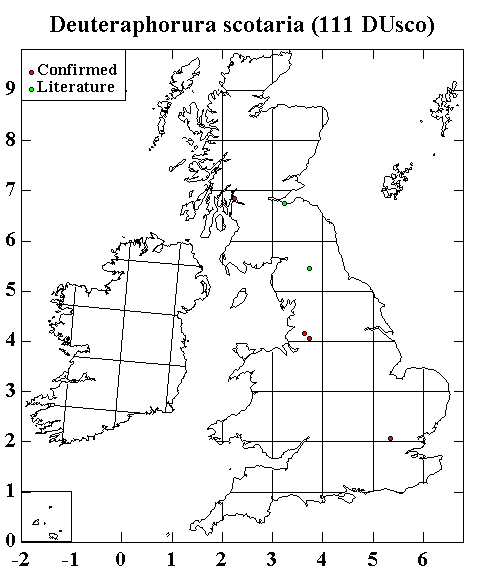|
Deuteraphorura scotaria (formerly Onychiurus scotarius) does not possess anal spines and the furca is absent. The post-antennal organ (PAO) contains about 20 complex vesicles. The first thoracic segment (th1) does not bear any pseudocelli (PSO). The typical PSO formula is 32/033/33353. The tibiotarsi of the legs each have nine distal setae and there is no inner tooth on the claw. Males of Deuteraphorura scotaria possess a field of enlarged spine-like setae on the ventral side of the third abdominal segment (abd3). The largest specimen I have seen which fits the above description was 2.9 mm in length. The number and arrangement of PSO on the body is difficult to determine, especially in permanent slide mounts. In the specimens I have examined, there have been some examples of asymmetry and it is clear that the pseudocelli formula (sensu Gisin) needs to be treated with extreme care if it is to be used as a method of separating species. There are no records to date from caves. It is not impossible that Deuteraphorura scotaria is a variety of Deuteraphorura inermis. Even Gisin (1954), when he described scotarius, said it was 'voisine de fimetarius' (the name by which inermis was known at the time).
The photographs (Figs. 1, 2) show good examples of 'typical' onychiurid genital plates.
Back to main page
|
|





